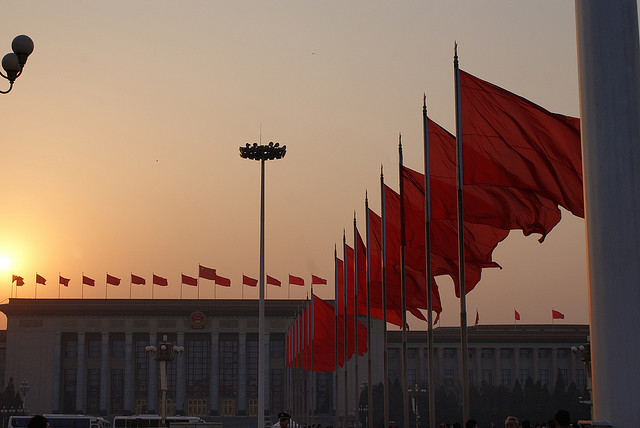
The Royal Malaysian Navy is a force to 15,000 personnel tasked with protecting almost 4700 kilometers of coastline. As a claimant in the South China Sea dispute and the possessor of a number of features in that sea, the Royal Malaysian Navy faces great challenges in securing Malaysia’s coastline despite having a capable navy. This article will assess its combat capabilities in light of the worsening security environment.
The bulk of the Royal Malaysian Navy is composed of its surface combatant arm. At present, Malaysia possess two Lekiu-class (light) frigates. Displacing 2270 tons, these British-built vessels carry eight Exocet anti-ship missiles, sixteen Sea Wolf surface-to-air missiles as well as a hangar for an anti-submarine warfare helicopter. The two-strong class provides the bulk of the Royal Malaysian Navy’s combat power and are the largest combat vessels of the navy. Faced with growing maritime insecurity, Malaysia wanted to supplement the two Lekiu-class ships with two additional ships and announced as such in 2006. Two ships were ordered from British builders but the order was cancelled in 2009. In 2013, faced with increasing maritime security requirements, Malaysia announced the locally-built six-vessel Second Generation Patrol Vessel (also known as the Littoral Combat Ship class). An enlarged version of the French Gowind-class modular ship design, the ships are to be home to a comprehensive sensor suite and a formidable number of anti-aircraft and anti-ship missiles, in addition to a hangar for an anti-submarine helicopter. The ships will displace approximately 3100 tons, marking a substantial design growth from Malaysia’s older vessels. The first ship is expected to be finished by 2018 and commissioned in 2019.

Supplementing the top tier frigates are four Laksamana-class corvettes and two Kasturi-class corvettes. The Italian-built Laksamana-class displace 675 tons and carry six Otomat anti-ship missiles and twelve Aspide surface-to-air missiles. Originally built for Iraq but embargoed following Iraq’s invasion of Kuwait in 1990, Malaysia acquired four of these built but unused vessels between 1997 and 1999. The two Kasturi-class corvettes are significantly larger, displacing over 1850 tons. They are equipped with eight Exocet anti-ship missiles but lack any meaningful air-defense capability despite their size. Moreover, the class only has a helicopter deck but no hangar. Commissioned in 1984, the ageing ships were upgraded in 2009 in order to remain in service until they are replaced in the early 2020s.
In order to patrol its long coastline and reduce the burden placed on its relatively small combat fleet, Malaysia has commissioned six Kedah-class offshore patrol vessels. Displacing 1850 tons, the German-designed and Malaysian-built ships are lightly fitted with respect to armaments but feature a helicopter hangar. That said, they are fitted for but not with surface-to-air missiles and anti-ship missiles. Malaysia’s original intention was to build twenty-seven ships but financial realities have meant that only six ships were commissioned between 2006 and 2010. Faced with a taxing demand for ships to deploy to the Gulf of Aden for anti-piracy mission in recent years, the Royal Malaysian Navy adopted a quite unorthodox (and inexpensive) solution by introducing what are in effect auxiliary patrol ships. In 2009, Malaysia purchased two 9000 ton container freighter ships and converted them into lightly armed patrol vessels equipped with a helicopter hangar. The two ships, the KD Bunga Mas Lima and the KD Bunga Mas Enam are sister ships of the same design. While Malaysia’s anti-piracy patrols in the Gulf of Aden have concluded, the ships are now being used to patrol East Malaysia’s coastline (on the island of Borneo/Kalimantan) in light of the 2013 Lahad Datu standoff when Philippine militants landed on the island to claim the land as their own, sparking a Malaysian military intervention in which the navy played a vital role.
In order to provide a deterrent to regional navies in light of the long-running South China Sea dispute, in 2002 Malaysia ordered two French-designed and built Perdana Menteri-class (Scorpene-class) submarines. Commissioned in 2009, the two submarines are based at TLDM Seppangar in Sabah, East Malaysia in order to provide rapid access to the zone around Malaysian occupied features in the South China Sea. The two submarines are the first submarines in Malaysian service and have provided an important new capability to the Royal Malaysian Navy.
While Malaysia has one of the most capable navies in the region, the capabilities of the Royal Malaysian Navy are stretched quite thin with its fleet deployed at a number of bases along the country’s long coastline. Worse still, one part of the country is peninsular and connected to the Asian continent whilst the other part is insular and distant from the demographic, political, economic and military core of Malaysia – something put on display during the 2013 Lahad Datu standoff. When combined with history, geography bedevils the Royal Malaysian Navy’s capabilities even further. Testament to this, the main base of the navy is TLDM Lamut on peninsular Malaysia, located in the Andaman Sea to the west of the Strait of Malacca. While this was an important zone of naval operations in the past, it is now far from the action in East Malaysia and the South China Sea. Despite such handicaps, as a result of its continuing expansion and modernization, the Royal Malaysian Navy is a capable force in Southeast Asia.




